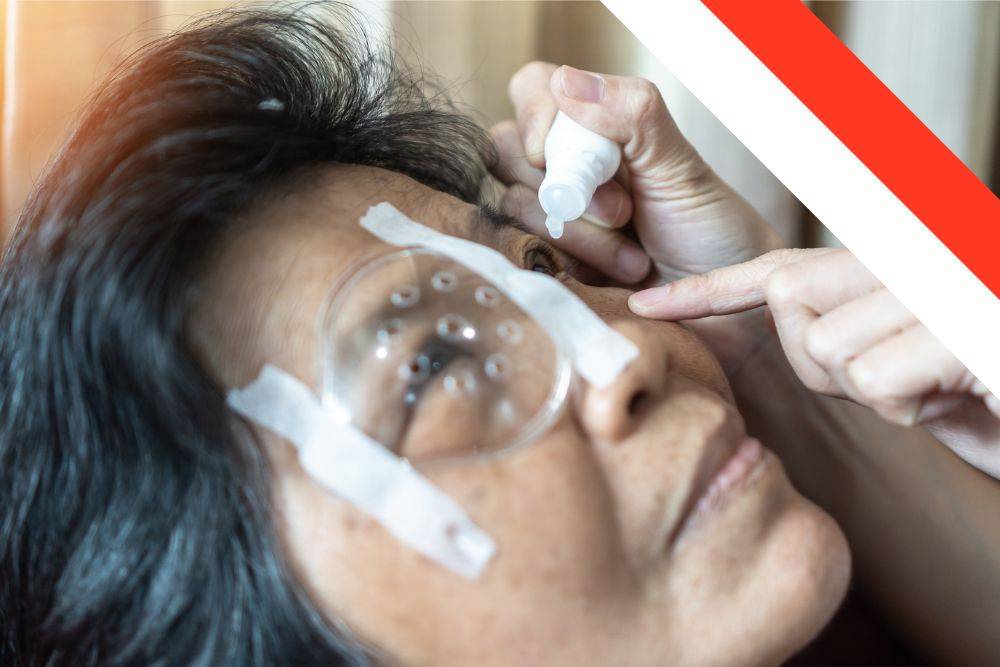Dry eye disease (DED) has become a significant public health issue, affecting millions worldwide.
Despite the widespread prevalence of dry eye disease, this condition often remains unnoticed and untreated, causing considerable discomfort and potential complications for those who suffer from it. Weitarsa Hendarto, director of PT Combiphar, brings attention to the growing epidemic of said disease and emphasises the need for greater awareness and proactive management.
The Scope and Impact of Dry Eye Disease
Dry eye disease (DED) is a chronic condition marked by inadequate tear production or poor tear quality, leading to inflammation and damage to the eye’s surface. It is estimated that DED affects up to 30% of the global population, with higher rates among women and older adults. Symptoms of DED vary from mild irritation to severe discomfort. Other symptoms include dryness, burning, itching, redness, blurred vision, and a gritty feeling in the eyes.
Causes and Risk Factors
Several factors contribute to dry eye disease, including age, hormonal changes, environmental conditions, and lifestyle choices. Tear production decreases with age, making older adults more vulnerable to DED. Hormonal changes, especially in women during menopause, can affect tear production and composition. Environmental factors like dry or windy climates, prolonged screen exposure, and air pollution can worsen symptoms. Additionally, certain medications, underlying health conditions like diabetes and autoimmune diseases, and surgeries such as LASIK can increase the risk of developing dry eye disease.
An Overlooked Epidemic
One challenge in addressing dry eye disease is that many people do not recognise their symptoms as indicative of a chronic condition. Dr. Jennifer Joy Santos-Rayos, an ophthalmologist, points out that patients often attribute their discomfort to temporary issues like lack of sleep or prolonged screen time. This causes patients to overlook the need for medical intervention. Moreover, the subjective nature of DED symptoms means individuals may not seek help until the condition significantly affects their quality of life.
Diagnosing Dry Eye Disease
Diagnosing dry eye disease involves a thorough eye examination and various tests to assess tear production and quality. These tests might include the Schirmer test, which measures tear production, and the tear breakup time (TBUT) test, which evaluates tear film stability. Additionally, ocular surface staining and meibomian gland evaluation can provide insights into the underlying causes of DED. Early diagnosis is essential for effective management and preventing complications like corneal ulcers and vision impairment.
Treatment and Management
Effective management requires a multifaceted approach tailored to the condition’s severity and underlying causes. Over-the-counter artificial tears and lifestyle changes such as reducing screen time and using humidifiers can relieve mild cases. Additionally, more severe cases may require prescription medications, including anti-inflammatory eye drops. PT Combiphar is a pharmacy company in 22 countries, with its base of operations in Jakarta. They manufacture the first line of treatment for DED, Hypromellose.
Raising Awareness and Educating the Public
Raising awareness about dry eye disease is crucial for early detection and management. Public health campaigns and educational initiatives can help individuals recognise DED symptoms and understand the importance of seeking medical attention. Healthcare providers are vital in educating patients about the risk factors and preventive measures for dry eye disease. Preventive measures include proper eye hygiene and regular eye exams.
The Role of Technology and Innovation
Advances in technology and research are enhancing the diagnosis and treatment of the condition. Innovative diagnostic tools like ocular surface imaging and tear film analysis offer more precise assessments of DED. Additionally, new treatment methods, including thermal pulsation devices and intense pulsed light therapy, show promise in managing the condition more effectively.
Conclusion
Dry eye disease is a common yet often overlooked condition that can significantly impact quality of life. Therefore, as the number of people affected by DED continues to grow, it is essential to increase awareness and promote proactive management of the disease. Recognising symptoms, understanding risk factors, and seeking timely medical intervention can help individuals better manage the symptoms and prevent its complications. Director Weitarsa Hendarto’s insights highlight the importance of a comprehensive approach to eye health, incorporating education, early diagnosis, and innovative treatments to tackle this epidemic.
Have a pressing question for a doctor? Medical Channel Asia has launched a community forum page where you can get questions answered by a medical specialist. Visit the community forum here.

